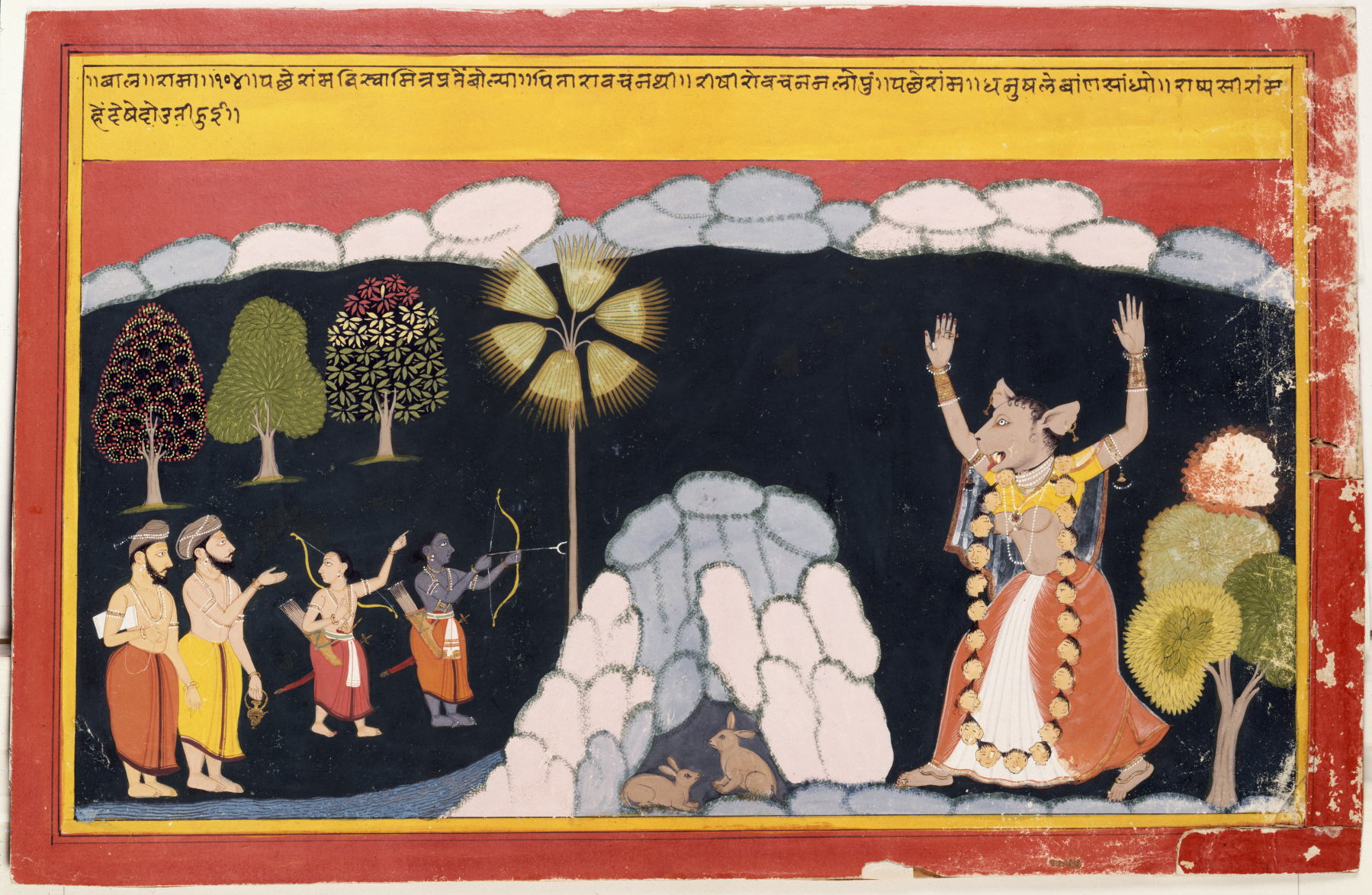Rama Destroys the Ogress Tadaka
(India, Nepal, and Tibet)
In the ancient Indian epic the "Ramayana," Rama, an incarnation of the god Vishnu, restores order to the world. For the rulers of the Hindu courts during the 18th and early 19th centuries, series of "Ramayana" illustrations provided models for behavior and sources of enjoyment. In a scene from his childhood, Prince Rama adjusts his bow. To the left is his brother Lakshmana and, further to the left, the sage Vishvamitra, Rama's teacher. Vishvamitra encourages Rama to take action against a demoness.
Inscription
Provenance
Provenance (from the French provenir, 'to come from/forth') is the chronology of the ownership, custody, or location of a historical object. Learn more about provenance at the Walters.
John and Berthe Ford, Baltimore [date and mode of acquisition unknown]; Walters Art Museum, 2001, by gift.
Exhibitions
| 2001-2003 | Desire and Devotion: Art from India, Nepal, and Tibet in the John and Berthe Ford Collection. The Walters Art Museum, Baltimore; Santa Barbara Museum of Art, Santa Barbara; Albuquerque Museum, Albuquerque; Birmingham Museum of Art, Birmingham; Hong Kong Museum of Art, Hong Kong. |
Geographies
India, Rajasthan (Place of Origin)
Measurements
10 1/4 x 15 13/16 in. (26 x 40.2 cm)
Credit Line
Gift of John and Berthe Ford, 2001
Location in Museum
Not on view
Accession Number
In libraries, galleries, museums, and archives, an accession number is a unique identifier assigned to each object in the collection.
In libraries, galleries, museums, and archives, an accession number is a unique identifier assigned to each object in the collection.
W.888


